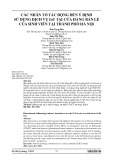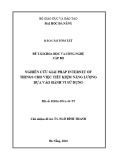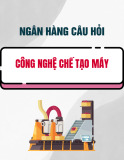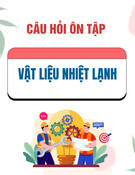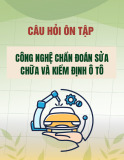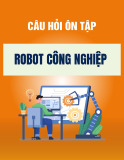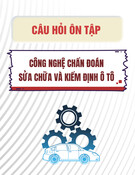
ISSN: 2615-9740
JOURNAL OF TECHNICAL EDUCATION SCIENCE
Ho Chi Minh City University of Technology and Education
Website: https://jte.edu.vn
Email: jte@hcmute.edu.vn
JTE, Volume 19, Issue 06, 2024
66
Implementation of an IoT-based System for Monitoring Parameters and
Tracking Transport Vehicles
Nguyen Bao Phuong Huynh , Duy Thong Nguyen*
Quy Nhon University, Binh Dinh, Viet Nam
*Corresponding author. Email: nguyenduythong@qnu.edu.vn
ARTICLE INFO
ABSTRACT
Received:
15/07/2024
The integration of Internet of Things (IoT) technology in vehicle
monitoring systems has emerged as a promising solution for enhancing the
efficiency, safety, and sustainability of transportation. Especially in
refrigerated trucks, which transport fresh goods, monitoring parameters in
the vehicle plays an important role in ensuring the quality of transported
goods. These parameters can be monitored directly on the vehicle by the
driver and at the same time, the manager needs to monitor remotely. This
paper will present an IoT-based system to monitor critical parameters of
vehicles, including temperature, humidity, fuel consumption, and
positioning. The proposed system integrates a network of sensors within
the vehicle to capture real-time data, which is transmitted to a centralized
control unit for analysis and visualization. Through experiments, the
effectiveness and reliability of the proposed system in providing accurate
and timely information on vehicle parameters are demonstrated. The results
highlight the potential of IoT solutions to revolutionize vehicle monitoring
and management, bringing benefits and reducing costs in the transportation
sector. Moreover, a discussion on the future trends and solutions in
transportation and logistics will be presented.
Revised:
08/10/2024
Accepted:
08/11/2024
Published:
28/12/2024
KEYWORDS
Internet of Things;
Vehicle monitoring;
Real-time tracking;
Smart logistic;
LoRa.
Doi: https://doi.org/10.54644/jte.2024.1619
Copyright © JTE. This is an open access article distributed under the terms and conditions of the Creative Commons Attribution-NonCommercial 4.0
International License which permits unrestricted use, distribution, and reproduction in any medium for non-commercial purpose, provided the original work is
properly cited.
1. Introduction
The transportation and logistics sector are at the core of economies around the world. It acts as a
medium that facilitates the movement of people, goods, and products from one location to another. Up
to 95% of manufactured goods are transported in containers at one point in the supply chain, and with
the global consumer class expected to grow by 35% by 2030 [1], demands on the transportation sector
are expected to increase. The increase in goods will lead to inevitable difficulties that traditional
transportation companies face such as the inability to track assets and the status of goods. This leads to
difficulties in optimizing transportation processes to reduce costs.
The Internet of Things, known as IoT, constitutes a network of interconnected devices that establish
connections and share data with other IoT devices and the cloud. These devices are commonly equipped
with technological components like sensors and software, encompassing both mechanical and digital
apparatus as well as consumer items [2]-[4]. Over the past few decades, the rapid advancement of mobile
and fixed network infrastructure has provided a highly conducive environment for the widespread
adoption of IoT technology across various domains. The system has the capability to function effectively
for a wide range of end users, including both individual consumers and various types of businesses.
There is no doubt that the trend toward using the Internet of Things with the use of sensors, applications,
and platforms will only increase over time. One of the main difficulties in developing Internet of Things
applications in transportation is the lack of single standards. This situation makes it difficult to integrate
wireless networks and objects into a single network. An ideal technology designed to combine three key
features (i) energy efficiency, (ii) stability and (iii) safety is still being developed [5]. Furthermore, there
is a risk of cyber-attacks on IoT systems' data, and this demotivates and destroys trust in innovation [6]-
[7]. Therefore, improving the security system for all devices participating in the network is one of the
main tasks of the IoT market. Internet of Things technology is applied not only in the home environment,













